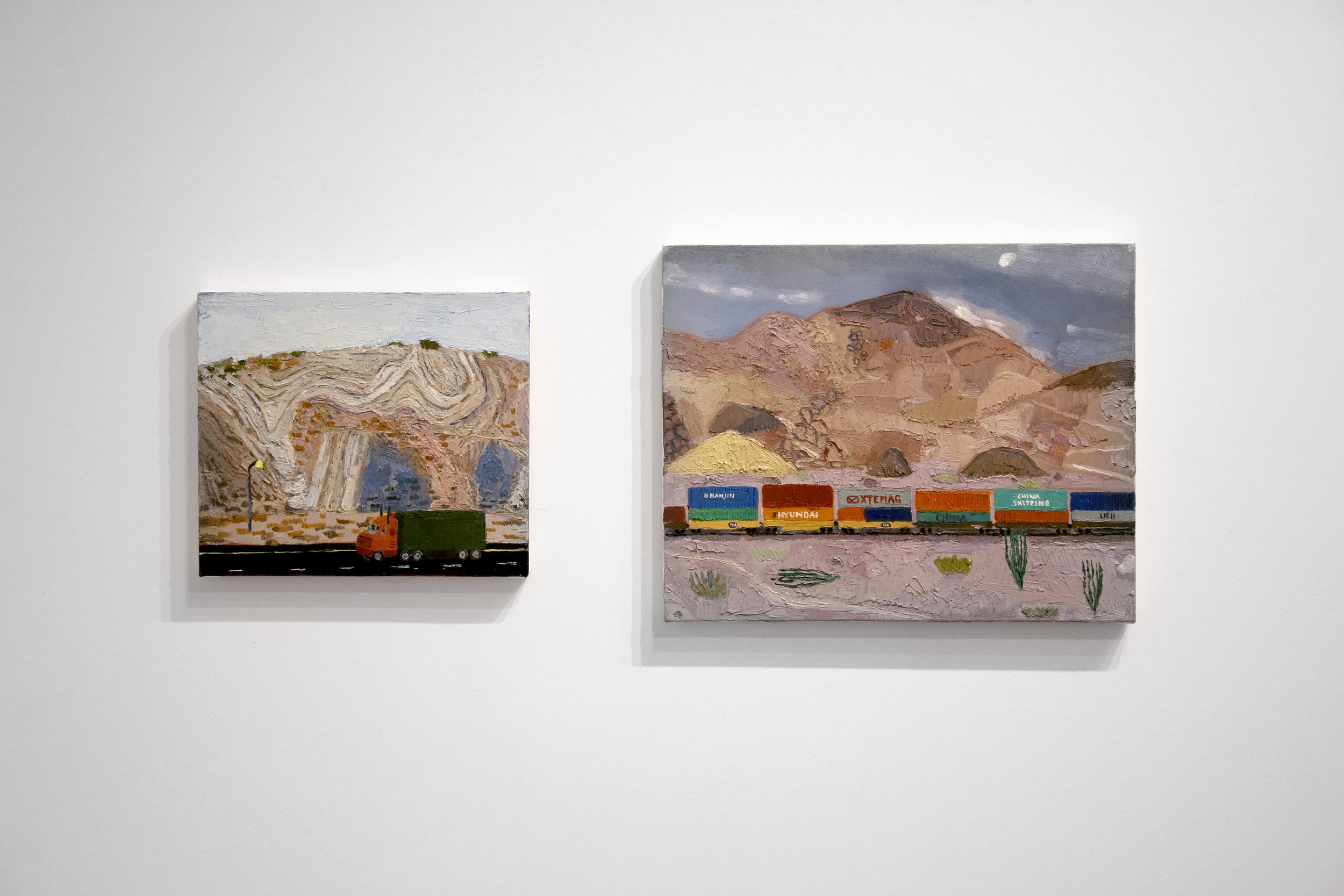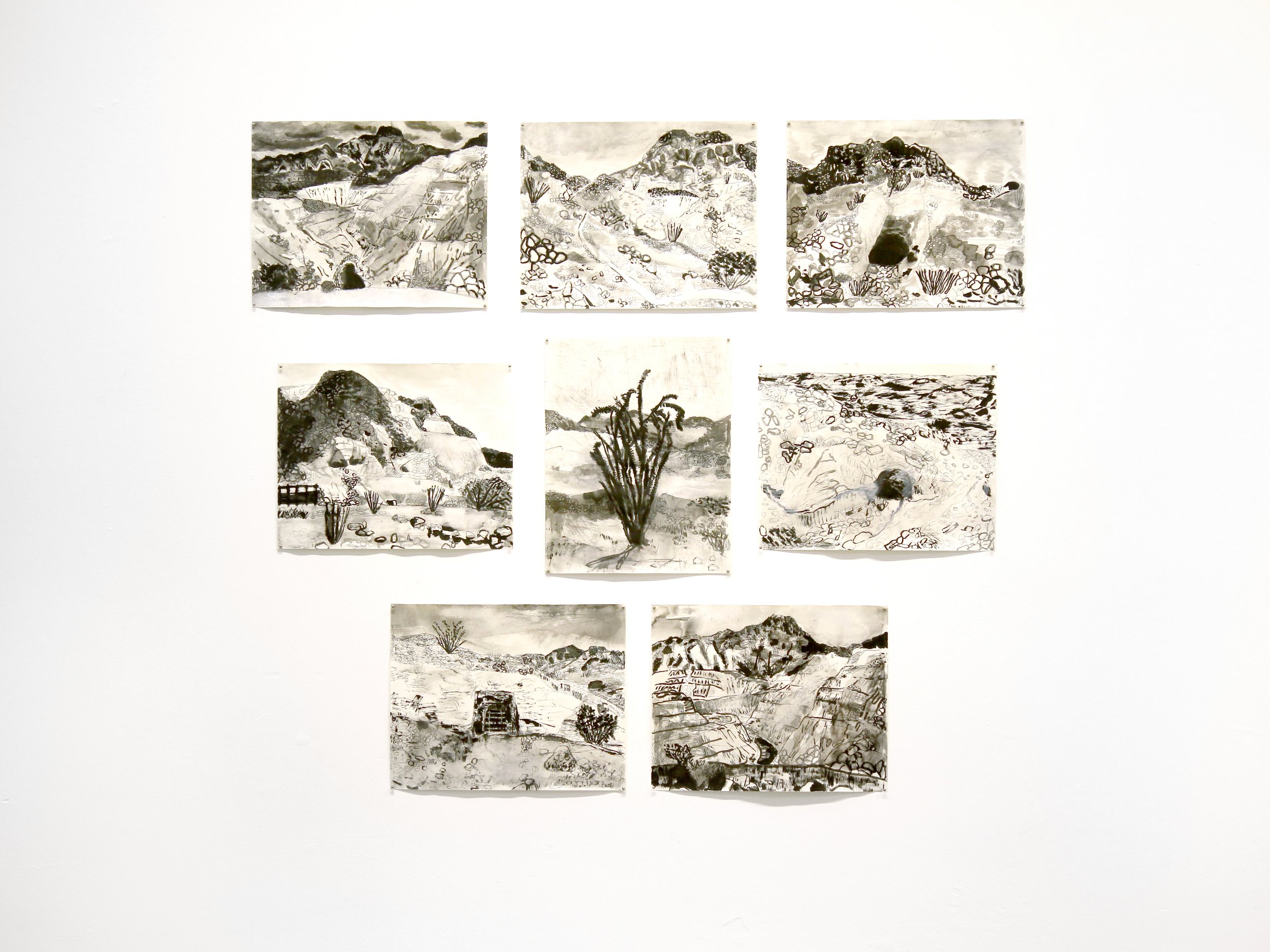Patrick Dunford
Welcome to Sidewinder Pass
March 14 - April 17, 2020
I started planning this exhibition in the fall of 2016 during a two week road trip through California just before the 2016 Presidential Election. I drove through the Mojave desert and then up the 395 highway past Owens Valley to Mono lake. The Valley was once home to the massive Owens Lake before it was drained for drinking water by the city of Los Angeles. Before heading home I attended Gem-O-Rama in the small town of Trona, which is situated in a valley next to Searles Dry Lake. The borax company in Trona opens up the dry lake once a year to gem and mineral collectors, who spend the weekend collecting massive amounts of pink halite and other salt-based minerals on its surface. The trip was a formative experience for me, combining in jarring fashion stunning geologic features and beauty with extensive signs of human intervention and claims of ownership. Later trips were made to other locales closer to home, including the canyon freeways near my home in San Diego depicting no trespassing signs, and the informal footpaths created by people living in the canyons.
My paintings depict how the areas I visited are used by people and the effects of geologic forces on their surfaces. In contrast to the idea of the West as a wide open and free place, I show a deeply contested one in which signs, pathways, mines and other debris mark and portion out the land. My current work focuses on signs in the land that restrict access, declare private ownership, or conversely mark areas of historic significance such as the indigenous presence on the land or the site of a camp where Japanese Americans were interred during World War II. Taken together the signs and other objects represent an archive of our cultural values, which emphasize land as property and as a place to find resources and ship commodities, and point to our history of violence and exclusion in settling the West. Everywhere in the paintings are the signs of hubris and of our obsession with the extraction of resources and the shipping of goods. Even the gem collectors repeat a nostalgic effort to dig holes in the ground and collect their loot with deep roots in California history.
I use painting to represent these things because it does not claim to be, nor can it be confused with, a depiction of objective reality. These works depict my subjective experience and interpretation of landscape through the medium of paint. For me painting is a material process, in which I build up an image through many layers. I make many corrections and alterations, scrapping away as often as adding paint. Working in series, images of mountains, pathways, rocks, and signs are repeated obsessively. Much like the spaces I represent, the paintings are constantly being built up, altered, and torn down. The paintings of signs, pathways, and abandoned mines describe a landscape in which even seemingly remote or neglected areas have been lived in and altered, and where private property and state land belie the idea of a pristine or undiscovered space.
Patrick Dunford was born and raised in Winnipeg, Canada and completed his MFA at Concordia University in Montreal. Solo exhibitions of his work have included Difficult Terrain at Jarvis Hall Contemporary in Calgary, Alberta (2018) and Recent Paintings at Laroche/Joncas Gallery in Montreal Quebec (2012). He recently moved to Indianapolis, Indiana where he lives with his wife Noni who is an art historian, and their son Walter.
Dunford’s recent work focuses on clear-cuts in British Columbia where he worked as a tree- planter, and the built environment surrounding his former home in San Diego, California. For his paintings Dunford draws from historical research on these sites, his own experiences working and traveling through them, and examples from art history.
















